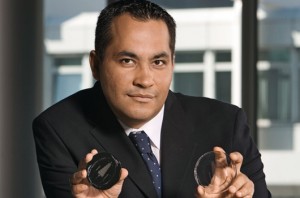Join the Department of Chemical and Biological Engineering for the 2015 Peck Lecture on Friday, May 1, 2015 at 3:15 p.m. in the Perlstein Hall Auditorium. The 2015 distinguished lecturer will be Ali Khademhosseini, professor of medicine at Harvard Medical School and director of the Biomaterials Innovation Research Center at Brigham and Women’s Hospital, Harvard-MIT Division of Health Sciences and Technology, MIT, Cambridge, MA, Wyss Institute for Biologically Inspired Engineering, Harvard University, Boston, MA. His talk is entitled, “Engineered Hydrogels for Regenerative Medicine Applications.”
A reception will follow the lecture. This event is free and open to the Illinois Institute of Technology community. For more information about the Peck Lecture Series click here.
Earn Engineering Themes Credit in Health for attending this lecture.
Engineered materials that integrate advances in polymer chemistry, nanotechnology, and biological sciences have the potential to create powerful medical therapies. Our group aims to engineer tissue regenerative therapies using water-containing polymer networks, called hydrogels, that can regulate cell behavior. Specifically, we have developed photocrosslinkable hybrid hydrogels that combine natural biomolecules with nanoparticles to regulate the chemical, biological, mechanical and electrical properties of gels. These functional scaffolds induce the differentiation of stem cells to desired cell types and direct the formation of vascularized heart or bone tissues. Since tissue function is highly dependent on architecture, we have also used microfabrication methods, such as microfluidics, photolithography, bioprinting, and molding, to regulate the architecture of these materials. We have employed these strategies to generate miniaturized tissues. To create tissue complexity, we have also developed directed assembly techniques to compile small tissue modules into larger constructs. It is anticipated that such approaches will lead to the development of next-generation regenerative therapeutics and biomedical devices.

